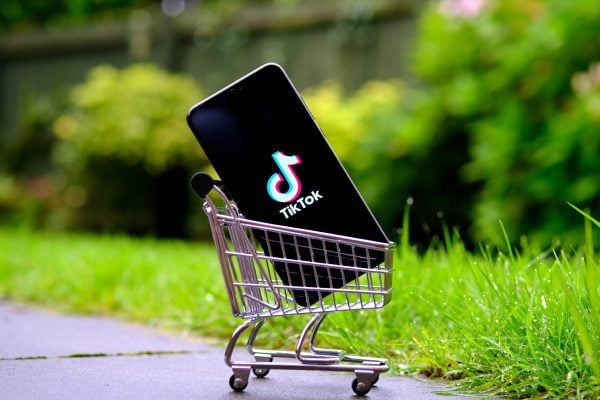Download or read online
This position paper on Marketplace Fulfilment is available as a free download to read offline at your convenience, or carry on reading below.
Marketplace Fulfilment
A couple of decades ago when marketplaces first started to appear on the Internet there were very few services to assist buyers and sellers. These were the days before the birth of online payments and it was common place for buyers to exchange pound notes for dollars at the Post Office and send them via mail to the US to complete a purchase.
Similarly, to payments, the carrier industry wasn’t prepared for the onslaught of parcels from Internet sales. At this time national postal service were focused on letter post and couriers were accustomed to delivering to business addresses and many would point blank refuse to consider deliveries to domestic addresses or indeed even allow consumer sellers to open an account.
Often sellers wouldn’t even offer shipping, leaving buyers to arrange their own way to collect purchases and when sellers did offer carriage they had restricted choices with expensive postal services and restricted access to couriers.
In the last two decades there has been an explosion of carriers opening and tailoring their networks to deliver Internet purchases to consumers and alongside them numerous third-party courier consolidators who offer online carrier booking to those without an account. Carriers are now continually innovating around domestic deliveries and in 2018 we’re already seeing a shift from the focus on the parcel to personalisation for the consumer enabling deliveries to be adapted to their lives. Timed delivery slots, earlier notifications, inflight redirections, the ability to specify safe places, click and collect locations and a host of other innovations are already a reality.
Marketplaces recognised early that existing services either didn’t exist or weren’t accessible to online retailers and so have introduced services themselves to make them available to large and small retailers alike. In this article we will examine the services that some of the best-known marketplaces make available and how they can help streamline fulfilment for your marketplace sales.
Automating Parcel Labels
eBay’s earliest foray into fulfilment was to introduce eBay Postage which in the earliest days gave access to Royal Mail’s services. At the start there were no real discounts on stamp prices but where they won was to offer ParcelForce courier pricing at heavily discounted rates compared to what could be accessed at Post Office counters. This was the first access to a courier for larger heavy items for many online sellers.
The second benefit of eBay Postage was the ability to purchase stamps or courier services online with eBay automatically populating the customer’s address details. Whilst this was very much a sale by sale process, it led the way to integrations where sales could be uploaded in bulk to third party integrations, either via CSV files or API integrations.
This type of time saving automation was picked up by numerous third parties who offered integrations with multiple carriers and added innovative shipping rule solutions to optimise carrier selection. Choice of carrier could be based on destination, weight, size, value, carrier performance and many other variables and a whole industry sprang up simply to produce shipping labels for marketplace fulfilment.
As well as standalone solutions, carriers themselves and multichannel management providers also built parcel label solutions into their software and today support multiple marketplaces.
In 2013 eBay acquired same day delivery company Shutl, which was founded in 2008 with the premise that they could collect a customer’s purchase from a high street retailer and deliver it to their home (or other chosen location) within 90 minutes.
eBay never fully integrated Shutl’s same day service but in 2016 announced the replacement of the current eBay label platform with a new label experience being built from scratch with Shutl. This enabled sellers to print all their labels in just a couple of clicks, saw the integration of more couriers giving different service options including thousands of convenient drop off locations and the ability to pay for multiple deliveries in a single transaction.
Parcel Consolidators
Alongside the companies automating the production of parcel labels, a new breed of intermediary parcel booking service sprang up. Using the bulk purchasing power from consolidating carrier purchasing from multiple online retailers, they offer discounts from many of the major couriers and post carriers and built marketplace connectors to import orders and semi-automate the production of labels.
Fulfilment Houses
A natural extension of courier consolidators is found with fulfilment houses who not only bulk buy courier services on behalf of their clients but also store, pick, pack and then ship items for retailers. Essentially a fulfilment house is an outsourced warehouse.
In the same way that carrier services were tailored for business to business deliveries, most fulfilment houses were originally set up to cater for large businesses, often retailers but sometimes for business to business fulfilment. This posed a problem when they turned to the booming ecommerce industry as online merchants often had more SKUs but lower inventory levels.
Fulfilment is most efficient with a low number of SKUs and a high volume or orders. In an ideal world stock would be delivered in bulk to the fulfilment house, broken down into single units and immediately shipped out. What adds significantly to the cost is when products are stored for longer periods of time tying up warehouse space.
As ecommerce has grown, fulfilment houses have re-evaluated their offerings and many do now cater to smaller online retailers although they still much prefer fast moving lines and high turnover. Pricing encourages retailers to hold SKUs with slower sales velocities in their own warehouse and only put products with high sales velocity into fulfilment.
Some fulfilment houses also specialise in oversize and heavy items or those requiring specialist handling. Hanging apparel for example has to be handled very differently to products in cuboid boxes.
Fulfilment by the Marketplace
Many marketplaces started out as retailers before inviting third party merchants to sell on their platforms. Having their own warehouses, it became natural for the marketplaces to offer use of their own facilities to their merchant partners. Examples are Amazon and Cdiscount.
The advantage for the marketplace is that they then control the end to end customer experience from the point of purchase right through the pick, pack and despatch process up to the point of delivery. In exchange for controlling the merchant’s stock, marketplaces tend to offer preferential placement for the merchant’s inventory such as Buy Box eligibility under Fulfilment by Amazon (FBA) and Expedited by Cdiscount.
Fulfilment programs also enables marketplaces to offer subscription programmes to consumers, such as Amazon Prime and Cdiscount at will, where expedited and free shipping can be offered.
Amazon have gone one step further with their FBA programme where they have started offering Seller Fulfilled Prime. It enables retailers, or fulfilment houses on behalf of retailers, the ability to retain control of their own stock but still gain the benefits associated with FBA. Naturally there are stringent performance requirements to join the Seller Fulfilled Prime programme.
Amazon Logistics
An interesting development in recent years has been the growth of Amazon logistics. Amazon have grown rapidly to the point where scale made it economical to build their own courier network, In the UK have captured more than 7% of the carrier market measured by number of parcels shipped. Only Royal Mail, Yodel and Hermes carry more UK parcels than Amazon – a staggering feat for a single retailer.
Having their own courier gives Amazon unique advantages to tailor deliveries to their own requirements. It’s what’s powered programmes such as Amazon Now – same day deliveries within the hour. Amazon Logistics, combined with their burgeoning number of Fulfilment Centres, also enable Amazon to offer ever later order cut off times to consumers for next day or same day delivery. Naturally, merchant owned products in FBA are also delivered by Amazon Logisitics.
Click & Collect
Marketplace recognised that consumers are demanding convenient delivery options and often this can include click and collect. Whilst high street retailers with stores in every major town can offer click and collect, many online merchants have few or no physical stores. Marketplaces have taken different routes to provide click and collect services on behalf of their merchants.
eBay forged a partnership with Argos, now owned by Sainsbury’s. Since its inception as a pilot in late 2013, the partnership has grown to become an increasingly popular delivery option for shoppers – The 10 millionth eBay parcel was delivered through the Argos Click & Collect network in its third year of operation. There is no cost to either the retailer or the consumer for eBay’s Click & Collect service, the aim is to bring big retailer service to even the smallest online seller.
Amazon have many different approaches to Click & Collect the simplest of which is to offer the consumer an option to specify a nominated safe place or preferred neighbour for deliveries. Amazon also offer local collect services from Royal Mail Post Offices and have a real estate of Amazon Lockers. Amazon Lockers are in, or near, shops and railway stations enabling consumers to collect parcels using a code sent to their mobile to retrieve their parcel. Amazon also partnered with Pass my Parcel for same day Click and Collect – consumer can collect same day purchases at over 500 newsagents and convenience stores across the country.
Global Shipping
Both eBay and Amazon quickly realised that they could increase sales by attracting buyers from around the globe. The barrier to this increased turnover for marketplaces is the complexity of both customs paperwork and tax collection which often deter retailers from selling globally. The two marketplaces implemented two very different programmes although both with the same end goal – to make marketplace fulfilment effortless for the retailer and consumers alike.
eBay’s solution was to launch a Global Shipping Programme. Essentially it enables a consumer to purchase an item and all the retailer must do is ship the item to eBay’s chosen partner (Pitney Bowes in the UK), who will then forward the item on to the international destination. At the point of purchase eBay add the cost of international shipping and any import taxes the consumer will be required to pay to the price quoted by the retailer. For the retailer this solution is virtually indistinguishable from a domestic transaction.
Amazon, as a retailer, put a much simpler programme in place – their Global Store. If Amazon spot a shortage of inventory in one territory but third-party retailers offer that product on a different Amazon country site, Amazon will make the product available and when it sells will simply purchase it from the retailer themselves. The retailer effectively sells the product to Amazon and then Amazon re-sells the product to the consumer adding on the cost of international shipping and any import duties and tax that will become due.
Newegg, also a retailer and a marketplace, have a similar solution to Amazon where they act as the merchant of record for international sales. China is a target territory for Newegg and so they market products listed on Newegg in the US to Chinese consumers and when a sale comes in the marketplace handles the local payment and delivery to the customer.
To assist retailers, Amazon have unified accounts so for example a retailer in the UK can also sell on Amazon country sites in Germany, France Italy and Spain. A North American unified account includes Amazon US, Canada and Mexico. Once a seller has a unified account Amazon offer additional FBA international selling programmes in Europe:
-
Amazon European Fulfilment Network
The merchant ships their products to Fulfilment Centres in the UK, and Amazon will fulfil orders coming from customers in other Amazon European marketplaces
-
Pan-European FBA
The merchants ship their products to Amazon FBA in their local country and Amazon intelligently distributes their products to Fulfilment Centres across Europe based on anticipated demand
-
Multi-Country Inventory
The merchant decides which countries to ship and store stock in, with Fulfilment Centres available in all five Amazon marketplaces in the EU
Marketplaces becoming a courier
Amazon Logistics has grown to the extent that they are ready to start marketing their services to non-Amazon customers. News of ‘Shipping with Amazon’ heralds the start of Amazon offering the same standard of delivery seen for products sold on Amazon, to third parties where no product was sold on Amazon. It will debut in Los Angeles and the expectation is that it will roll out across the US and to the UK later.
Whilst this may seem secondary to Amazon’s main business, by opening Amazon Logistics for non-Amazon parcels they will rapidly gain scale. As the number of parcels grows so will the number of couriers employed, and this will enable fund further growth of the network enabling Amazon to offer even faster deliveries, timed deliveries, more click and collect options and potentially timed evening and weekend services. This is a level of personalisation that the courier industry as a whole is striving to achieve but Amazon are building a network designed for ecommerce from the ground up.
Why retailers should consider marketplace fulfilment services
Marketplaces are the giant behemoths of the online retail industry and have a scale which dwarfs some of the largest offline retailers in the world. Their aim is to sell as many products as possible in the most efficient and economical manner. They have partnered with existing fulfilment services where they’ve been available but when no existing solution is available they build their own. Unlike traditional carriers and fulfilment house, the new solutions and services have been specifically designed for online commerce, unhampered by legacy systems or existing customers.
Crucially, marketplace fulfilment services offered to retailers, whether domestic or international, are designed with the goal of increasing sales with minimal disruption. Not all services will be suitable for every merchant, but the judicious choice of marketplace fulfilment will enable a retailer to grow faster quicker both domestically and overseas.










One Response
Why retailers should NOT consider AMAZON fulfilment services:
1. Anybody that treats workers the way Amazon do (somewhere between automatons and slaves) doesn’t deserve your business.
2. They aren’t as good as they say they are. Read the feedback for sellers using FBA and see just how much feedback there is for late delivery. Oddly Amazon say that feedback for sellers leads to better service, but strangely they don’t allow feedback for themselves. Could it be that they wouldn’t look so great when compared to the top sellers.
3. Its not healthy for anyone to control everything. If they keep going at this rate there’ll be statues of Jeff Bezos in churches and JC will be all but forgotten.